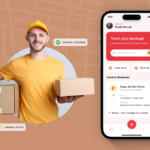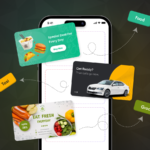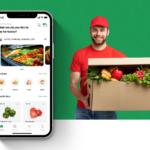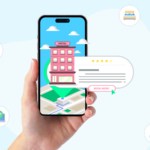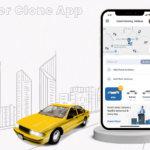Grocery Delivery App Development: A Guide for Supermarkets & Local Stores
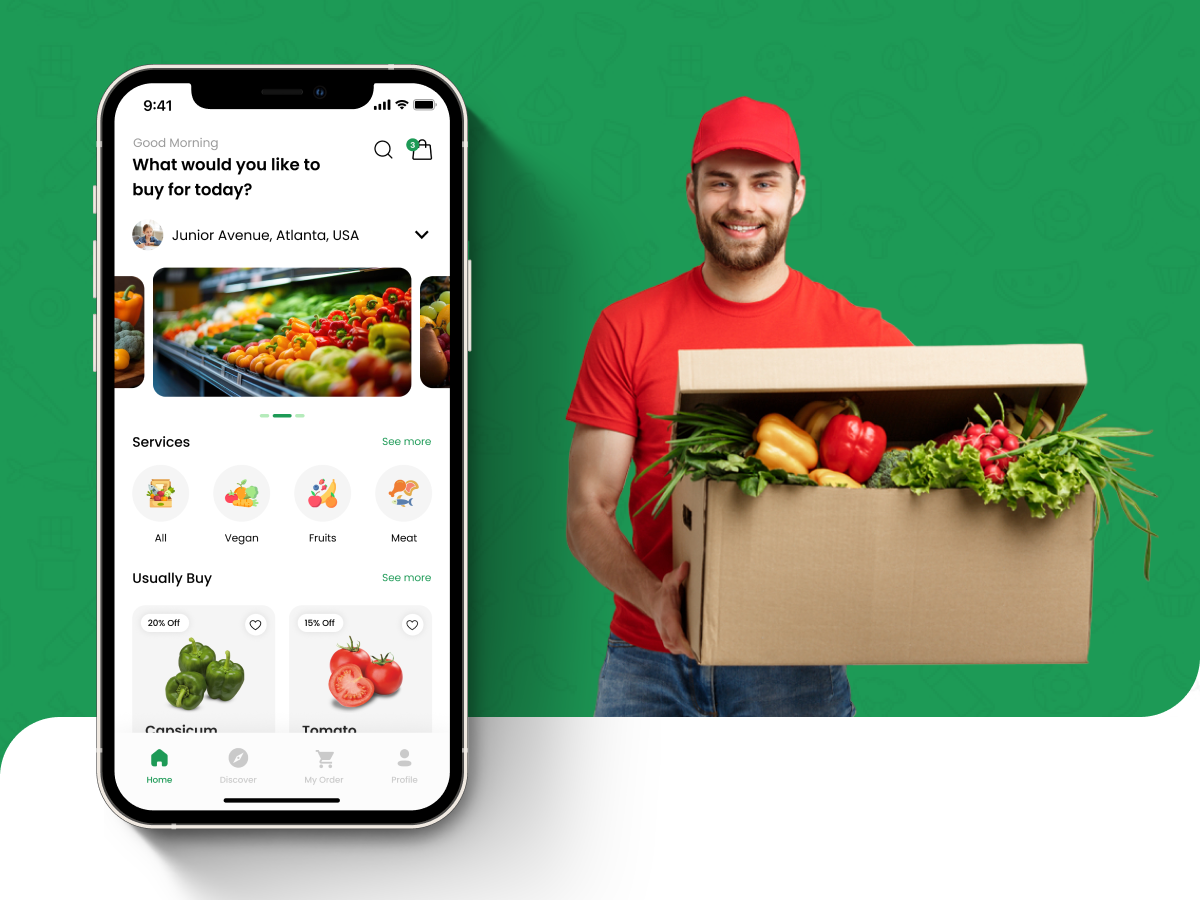
-
Ankit Patel
- February 21, 2025
- 10 min read
Grocery shopping apps are a blessing for online grocery shoppers!
In an era where everything comes in handy, grocery shopping apps have grown to be an essential part of our daily lives.
Customers prefer the convenience, delivery at home, and time-saving benefits of online grocery delivery services.
Everything is available on smartphones, waiting for you, just a click away!
Besides, a grocery delivery app helps businesses as well, as it offers a bridge to create brand awareness & loyalty.
Since the COVID Era, when going to the physical market was rather near impossible, the grocery shopping apps market has bloomed.
Even in 2025, the popularity of grocery shopping apps is taking leaps & bounds, offering a multitude of business opportunities!
Besides, the online grocery market is estimated to reach approximately $1.1 trillion by 2027, growing at a CAGR of 25%.
In today’s market, where everything that’s online rules, grocery delivery app development is worth your time & every penny!
In fact, more than 60% of shoppers preferred to go for online grocery delivery, thanks to the convenience.
But what does it take to develop a grocery shopping app from scratch? And, how much would it cost to build a grocery application? Let’s find out, in detail.
This comprehensive guide covers every stage of development, including features, costs, benefits, and monetization strategies, to help you successfully launch a top-notch grocery delivery service.
◉ The Perks of Grocery Delivery Service App
• Convenient & Time-Saving
Online grocery delivery makes everything available & delivered to your door with a few clothes. Due to this, customers can buy groceries anytime from anywhere.
• Enhanced Sales Possibilities
The quick, easy & smart features of online grocery delivery apps help sellers with business automation and keep them updated & available to the customer mass through online presence.
• Increased Client Attention & Retention
While offline stores offer a limited customer outreach, an online presence can help attract a huge group of customers from every region & help them retain them by staying up to date with the trends.
• Safe & Hassle-Free Payments
Users are comfortable placing orders and making payments from any mode (Cards, UPI, and Cash-on-delivery) without much stress or worry. Also, many grocery delivery services offer online as well as offline payment while doorstep delivery; making it more convenient & trustworthy.
• Reduced Goods Wastage
Grocery delivery Apps promote smooth & real-time goods & stock management, which helps prevent overstocking and minimize wastage.
◉ Essential Features You Need To Consider While Developing a Grocery Delivery App
Grocery delivery app development involves various key components that enable a flawless experience for everyone including users, delivery partners, and admin.
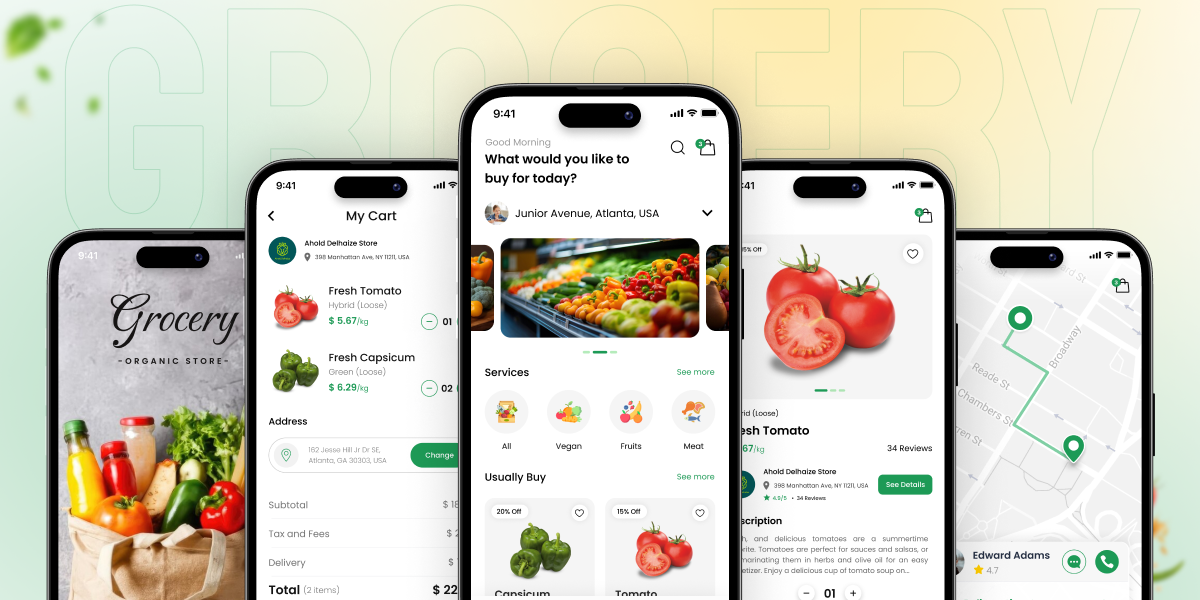
1. The Consumer App
This element is particularly designed to serve the end users. Its goal is to offer a user-friendly & convenient user experience.
This feature helps end users in every step of grocery shopping like:
- Search products
- Create an individual shopping list
- Place order & checkout
- Track their order in real-time
- Smooth user interface during the process
- Review & Rating
Let’s dive deeper and find out how you can successfully develop a grocery app & get the best outcomes!
• Easy Login and Signup
Enable quick & easy signup & login through email, phone number, or various social media accounts.
• Product Categories and Smart Search
Advanced search options with keyword suggestions & voice search make finding products easy.
• Diverse Payment Options
Safe, simple & secure payment via credit/debit cards, wallets, and UPI at the time of checkout makes the whole process smooth & hassle-free.
• Order Monitoring and Live Notifications
Live order monitoring of customer orders & on-time notifications helps them know the order status at any time.
• Scheduled Delivery Options & Recurring Orders
Scheduled delivery options help customers choose their preferred delivery time, while the recurring orders feature option helps them buy their favorite order, thereby saving search & selection time.
• Saved Items and Wishlist
With this feature, you can notify the customer of their selected items, waiting for their final decision.
Also, customers can wishlist the items they might need in the future.
• Reviews & Ratings
This feature can help create a sense of trust & authenticity of the grocery products bought by customers.
• Special Discounts
Your loyal customer deserves discounts & offers from time to time, besides these offers can be beneficial for new buyers as well.
• AI Recommendation
This feature enhances user experience by providing personalized product recommendations based on customers’ shopping patterns, choices, or current trends.
AI Recommendation offers:
- Personalised shopping experience
- Improved sales
- Customer loyalty
- Lower shopping time for users
- Opportunities for cross-sales and upselling.
2. Delivery Personnel App
Designed solely for delivery partners, these features enable order management & smooth delivery process.
This feature helps deliver personnel through every step like:
- Order management
- Quick order confirmation
- Customer location navigation
- Proof of delivery
- Smooth communication with the user
Let’s dive deeper.
• Quick & Easy Registration
Simple signup and login using phone number, email, or social media for hassle-free access.
• Instant Order Alerts
Get real-time notifications for new delivery requests with pickup and drop-off details.
• One-Tap Order Management
Accept or reject delivery requests easily based on availability and workload.
• Smart Route Optimization
Access the fastest and most efficient delivery routes to save time and fuel.
• Tracking of Earnings and Payouts
Timely, fair & transparent earnings motivate the delivery partner & ensure better crew management. The delivery partner should be aware of their earning and payout by real-time updates.
• Secure Proof of Delivery
Collect digital signatures, OTP verification, or photos to confirm successful delivery.
• Seamless Customer Communication
In-app chat or call feature to connect with customers for order-related queries.
• Delivery History & Performance Tracking
Access past deliveries, track completed orders and review performance insights.
3. Admin Panel
Designed to facilitate business owners/sellers/shop owners this feature helps them to manage the whole delivery operation & control the whole delivery service. It includes:
- Addition or removal of products
- Order monitoring
- User account management and analytics
- Earnings and pay-out management
Let’s dive deeper.
• Product Management
Sellers should be able to easily add, modify & categorize the products in various product categories & prices as well.
• Real-Time Inventory Tracking
This can help the seller be constantly updated about their stock levels at any time, reducing the errors in taking orders. Also, stocking alerts & expiry date alerts can help them manage their inventory smoothly.
• POS Integration
As the name suggests, A POS Integration helps connect the grocery delivery app with the store’s Point of Sale System. This way every order placed by the user automatically syncs with the store’s inventory & checkout system.
This feature enables:
- Automated order fulfillment process
- Enhanced performance of operations
- Improved client satisfaction
- Improved storage control.
• Order Management
The store owners should be able to receive, approve & process orders quickly. Also, order assignments, order tracking, & real-time communication make the grocery delivery process streamlined & hassle-free.
• Customer Insights and Analytics
Various features like order pattern tracking, feedback analysis, and rating analysis can help the sellers understand their customers more. This can help them make important decisions to draw & increase local customers.
• Multi-Store Integration
This feature can help have centralized control over every shop while managing inventory & choosing order routing for every store.

◉ Step-by-Step Development Process for Grocery Delivery Apps
Grocery delivery app development requires careful planning, analysis & understanding of various factors & cumulative execution.
Let’s understand every step in detail from research to app launch to get the exact idea.
Step 1: Market Research & Competitor Analysis
Before diving neck-deep into the development, first, you need to understand the market you’re dipping your toes into.
• Know your audience:
Try to understand your customers by knowing their locality, needs, choices, and pain points.
This will help you to decide on your online grocery delivery app’s features & strategy.
• Know your market:
Research the current size, trends & estimated evolution of the grocery delivery market in your targeted area. This can help to know the potential of the app’s future.
• Know your competitors:
Try to understand the strengths, weaknesses, pricing strategies & features of the competitors blooming in your market.
This will help you make your app stand out & step up the whole game!
A thorough SWOT (Strengths, Weaknesses, Opportunities, and Threats) analysis can help you know your position in the market while identifying the challenges & growth possibilities.
Step 2: Choosing the Right Business Model
Understanding and choosing the right model is an essential stage of the grocery app development process as it will dictate how your app operates & generates ROI.
The Grocery shopping app market offers various business models to fulfill the miscellaneous customer needs & competition.
To decide on the right model you must focus on the factors like:
- Target market
- Investment and resources
- Inventory and logistics capabilities
- Competitor terrain
Let’s understand the most prominent business models embraced by grocery businesses:
I. The Aggregator (Marketplace) Model
In this popular model, The delivery app acts as a platform connecting customers & businesses.
The business doesn’t own the inventory but partners with existing local stores.
Here, the customer places the order through the App Platform & the platform forwards the order to the selected local store.
Pros:
- No inventory or stores for inventory keeping & management are needed.
- Low start-up costs.
- Great Possibility of scalability & expansion.
- Wide range of products & sellers to choose from.
Cons:
- Product quality pricing depends on the selected stores, not the platform owner/business.
- Lower profit margins than inventory business model.
II. Inventory Model
This is an example of a classic supermarket model in which the business or store app owner has ownership over the inventory and inventory management.
Here, the business consists of physical stores & warehouses from which they process & deliver the received orders.
Pros:
- Unlike the Aggregator model, total control over product pricing, inventory management & quality.
- Potentials for higher profit margins.
Cons:
- Higher Investment for starting up the business is required to enable warehouses & inventory.
- Risk of spoilage or wastage.
III. Hybrid Model
This model combines features & properties of the most prominent business model AKA The aggregator and inventory models.
Here the business can choose from & own some inventory from the high-demand items & partner with other stores.
It offers a wide range for selection & flexibility of both the models.
Pros:
- Equilibrium of control & flexibility.
- Handpicked product selection with access to wider varieties.
Cons:
- Can be a little complex to manage.
- Without careful planning & coordination, smooth operation is not possible.
Step 3: Selecting the Right Tech Stack
| Category | Tech Stack |
| UI/UX |
|
| Frontend Development |
|
| Backend Development |
|
| Database Management |
|
| Cloud Hosting & Storage |
|
| Payment Gateway |
|
| Mapping & Location |
|
| Security |
|
| Server Management |
|
| Analytics |
|
Step 4: App Design & Agile Development
This step helps bring life to your App. In this crucial step, you will be able to decide how your user will interact with the app.
- Try to develop an app that offers an intuitive user experience, ease of navigation and seamless shopping experience.
- Design the app in such a way that it can easily acclimate across different devices and offer seamless operation & accessibility.
In agile development methodology, the development process involves:
- Breaking the whole project into small, manageable sprints.
- Continuous integration & monitoring of every sprint is done & after the successful completion of every sprint, the app development process is completed.
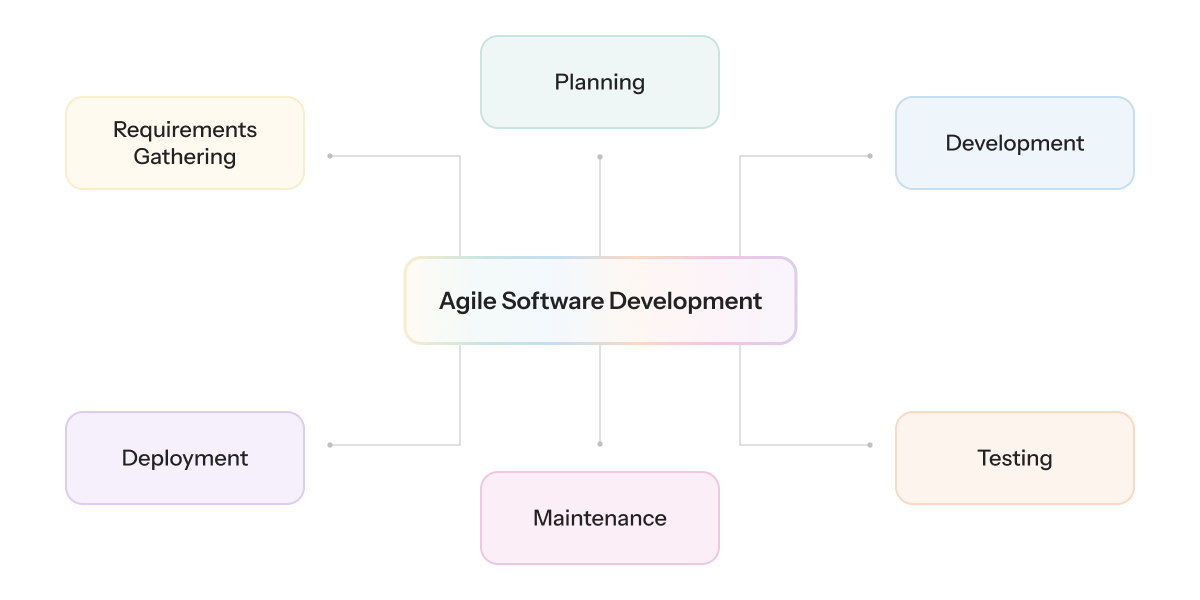
Step 5: Testing & Launch
- In this stage rigorous testing steps like functional testing, usability & performance testing & testing of security are conducted to ensure that the app is functioning adequately.
- After successful testing, the app gets launched to the platforms & comprehensive marketing strategies are executed to promote the app.
Read also: How to Start a Grocery Delivery Business
◉ The Cost Estimation of Developing a Grocery Delivery App
We understand that it takes a lot to develop an on-demand grocery application.
It’s essential to have an idea of how much the overall development might cost; so it can help with budgeting and planning.
The following are the main factors that can impact the total cost it takes to build a grocery delivery app.
• App Complexity & Features
The complexity of the app you decide on & the features you want to include can impact the cost of development.
| App Complexity | Estimated Cost |
| Basic App(MVP) | $8,000 to $12,000 |
| Medium-Complex App | $15,000 – $25,000 |
| Fully Featured App | $40,000 or more. |
• The Selected Team of App Developers
The size, hourly charges, location & number of developers in your selected app development team greatly impact the overall budget.
• Choice of Platform
The selection of platforms i.e. Android, iOS, or cross-platform integration can also significantly impact the whole app development process.
Read also: Know Why to Invest in Grocery App Development
◉ Grocery Shopping App Revenue Models
Grocery shopping apps can be designed based on various models to generate steady & flawless revenue. Here’s the breakdown of the most prominent models:
| Model | Description | Pros | Cons |
| Commission Based Model | Revenue generation through commission from each order placed. | Simple and straightforward. | Competitive commission rates can lead to lower profit margins. |
| Membership or Subscription Based Model | Revenue generation from recurring charges to app members & subscribers. | Offers special benefits to members leading to customer loyalty and stable revenue generation. | Without a compelling subscription plan, it’s hard to draw & retain loyal members. |
| Delivery Costs | Revenue generation from convenience fees of online delivery service. | Direct revenue generation from customers. | Balancing profits & customer acceptance can be difficult, free delivery options from a competitor can hinder the orders. |
| In-App Advertising | Revenue generation from advertising third-party business on the platform. | Possibility of large revenue generation by large user mass & targeted advertising. | Without a proper implementation strategy, it can impact negatively customer experience. |
| Surge Pricing | Revenue generation from price hikes during peak demand periods. | Offers maximum revenue during peak times. | Without transparency & fairness, it can lead to customer dissatisfaction. |
To choose the model that works the best for your business, you must consider multiple factors.
And the right model can be chosen by considering factors like:
- Your target market
- Competitors approach
- Business goals
- Inventory and logistic capacities.
◉ Wrapping up
The grocery shopping app market is taking leaps & bounds in today’s world and building a successful grocery delivery app for supermarkets (like Blinkit, Instacart, Bigbasket) is something easier said than done!
But the grocery app development process becomes a plain sailing journey when you have a team of expert developers by your side!
Keeping your end user in mind and developing the strategy accordingly can be your way to a successful app development journey.
◉ Frequently Asked Questions(FAQs) about Grocery Delivery App
• Apparently, how much time does it take to build a grocery delivery app?
The complexity of the app can decide the time it takes in the development.
If you go for a feature-rich grocery delivery app, you can estimate 6-9 months, while it takes 3-4 months to build a basic app with minimal features.
• Which features are necessary in an online grocery delivery app?
A few essential features of online grocery delivery apps can be:
- User Registration
- Product search
- Shopping cart
- Various payment methods
- Order tracking
- And delivery scheduling.
• Is it feasible for me to build an app like Instacart (for supermarkets) or a grocery delivery app for local stores?
Indeed! You can build your dream grocery app that is inspired by Walmart or Instacart.
But it can be possible with the correct development team and technological stack.
• Which business plan is best suitable for grocery app development?
While keeping your company goals and available resources in mind during grocery app development, you can select between various models, which are:
- The inventory model
- Marketplace model
- Or the hybrid model.
• How can I make money off of a grocery shopping app?
There are various ways to make money from your grocery shopping app which can be through:
- Delivery fees
- Various membership plans
- In-app purchases
- Franchise charges from affiliated grocery retailers.
You may also like
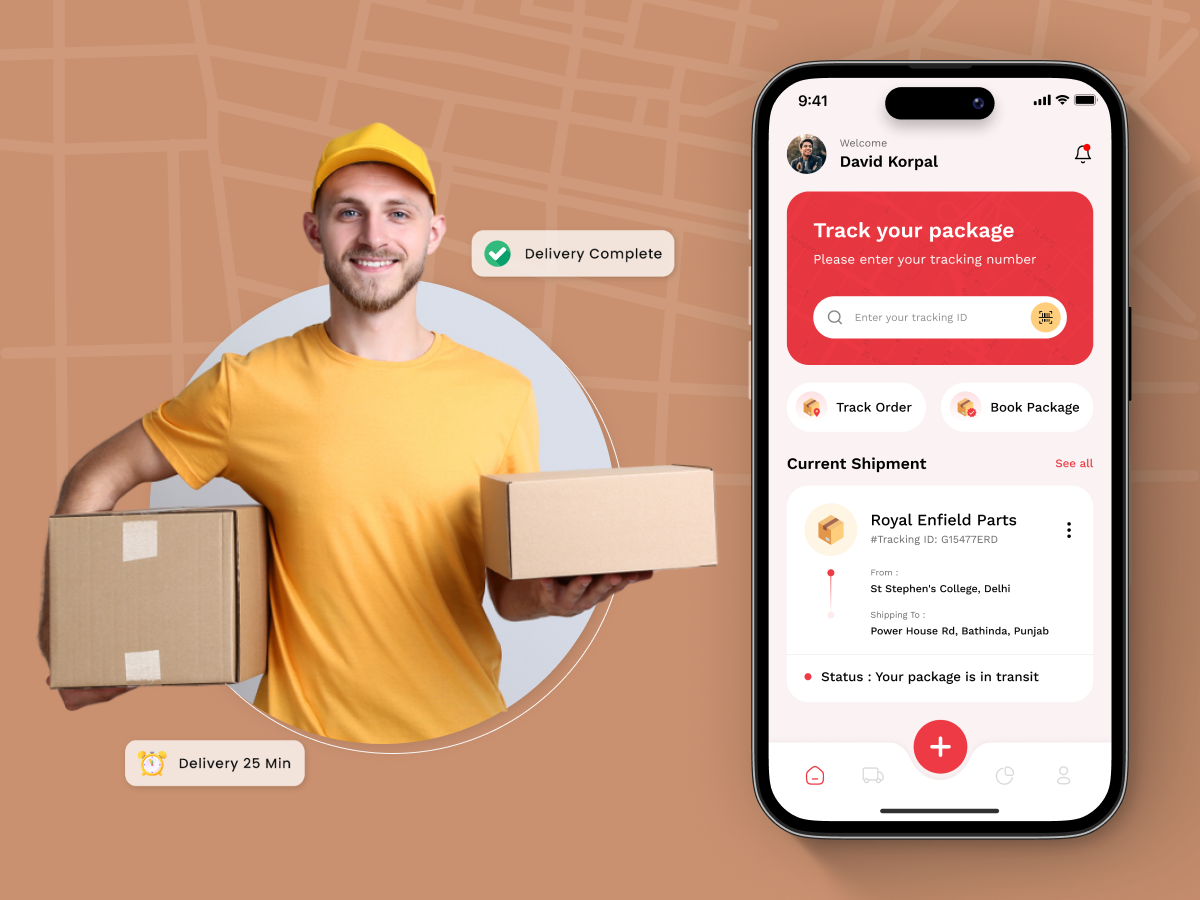
How Courier Delivery Apps Can Revolutionize Your Business Operations
-
Ankit Patel
In the fast-paced world of today, the gears of business operations never really stop moving. Are you a seasoned logistics and transportation business giant? Or a burgeoning startup hoping to transform the delivery landscape? Or an enterprise managing a complex web of shipments? No matter where you stand, the pressure to deliver quickly, efficiently, and… Read More
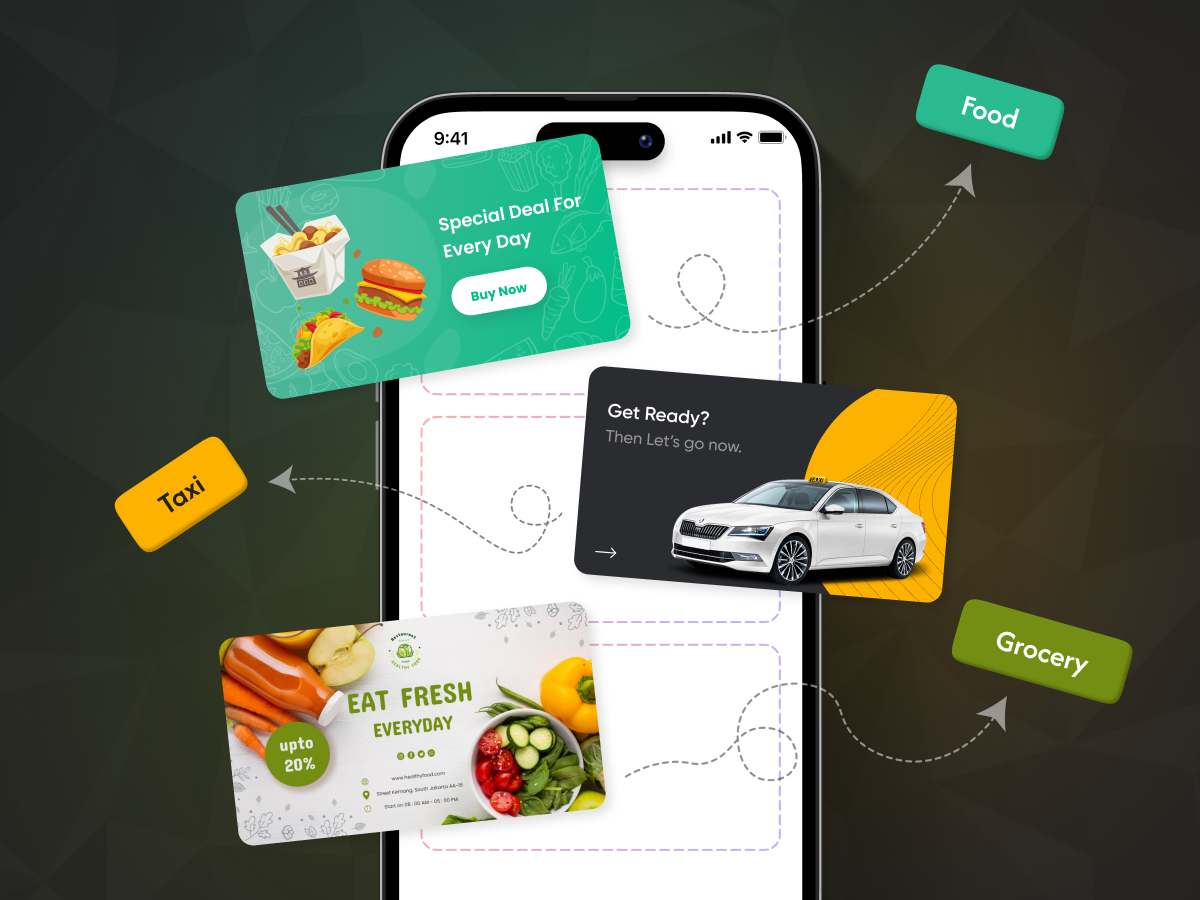
Super App Development Guide: All-in-one Food, Grocery & Taxi App Solution
-
Chirag Vaghasiya
In today’s digital world, which is overflowing with applications that take up storage space on mobile phones and have only one function, a new precedent is beginning to emerge Let’s think about it, an application that serves multiple purposes at a time. Yes, an application fulfills all the day-to-day necessities of a regular user! A… Read More
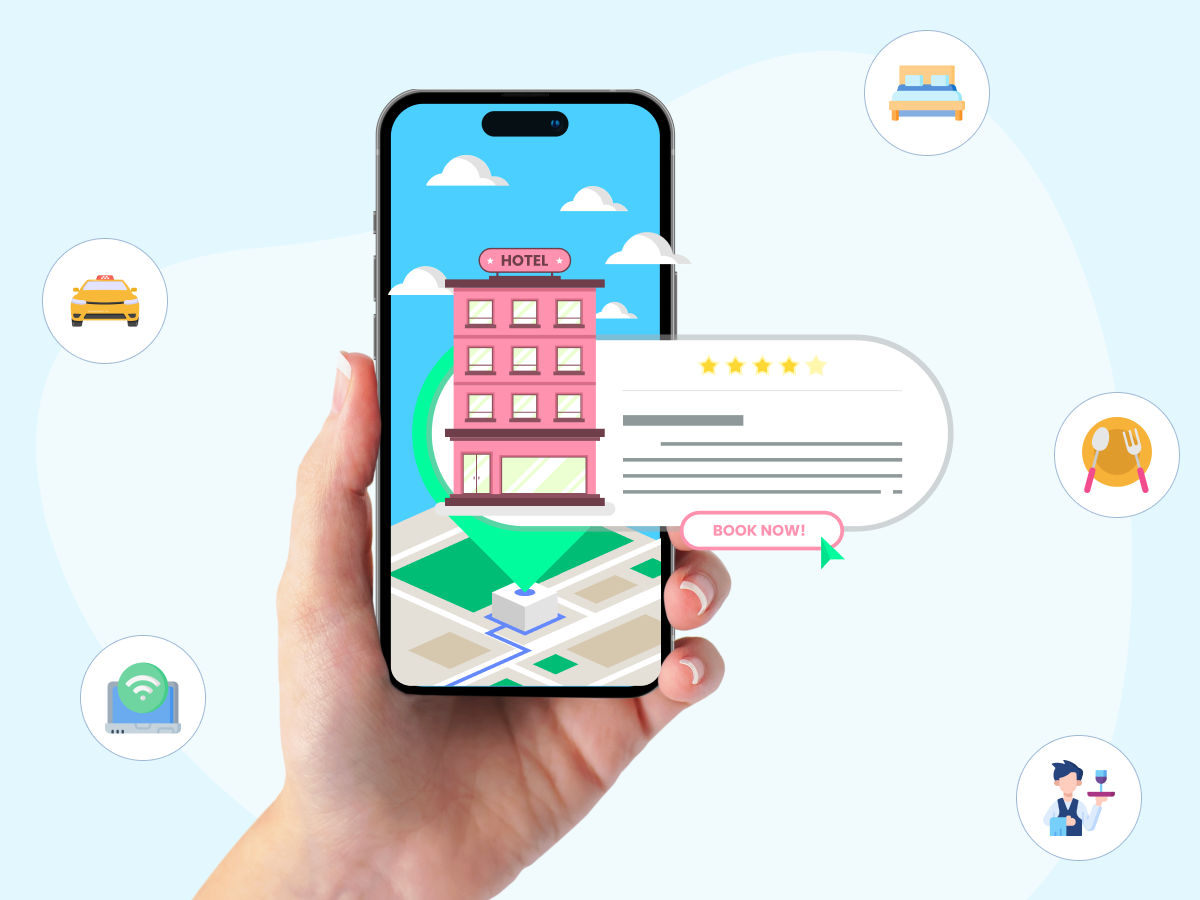
Top 17 Features to Consider While Building a Hotel Booking App
-
Chirag Vaghasiya
The hospitality industry has undergone a seismic shift in recent years. Gone are the days of flipping through endless travel brochures or relying solely on phone calls for reservations. Today, travelers crave a seamless, digital experience, and hotel booking apps have become the undisputed champions in fulfilling that desire. But these apps are more than… Read More

